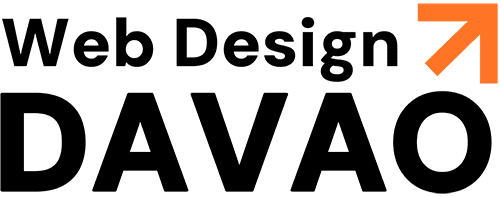In today’s fast-paced digital world, SEO is no longer just a buzzword; it’s a vital strategy for online visibility and business growth. Search Engine Optimization (SEO) allows your website to appear in relevant search results, ensuring that your audience can find you easily. However, diving into SEO without understanding its intricacies can be disastrous. It’s not just about selecting the right keywords—SEO requires a methodical approach that considers everything from website structure to content quality.
If you jump into SEO unprepared, you may end up wasting valuable time and resources. Poor SEO tactics can lead to penalties from search engines, and you could be left struggling to climb the rankings. Without the right preparation, you might also miss out on key optimization opportunities that could make or break your site’s success.
In this post, we’ll cover the five essential preparations you need to make before diving into SEO. These steps will set you up for success, saving you time and effort, and ultimately boosting your website’s performance in search engine results.
1. Understanding Your Goals and Audience
Define your endgame: What do you want to achieve with SEO?
The first step in any successful SEO strategy is defining your end goals. What exactly do you want to achieve? If you aren’t clear about your goals, your SEO efforts will lack direction and purpose. Ask yourself:
- Are you looking to increase brand awareness?
- Do you want to drive more traffic to your website?
- Are you hoping to convert visitors into paying customers?
- Or perhaps you want to build credibility and establish thought leadership?
Once you’ve pinpointed your objectives, you’ll be able to tailor your SEO strategy accordingly. For example, if your goal is to generate leads, your SEO strategy will focus on optimizing landing pages and content that drives conversions. On the other hand, if you’re looking to build brand awareness, you might prioritize creating high-quality blog posts and educational content that speaks to your audience’s needs.
Identifying your target audience and their search behaviors
Understanding who your audience is and how they search is crucial. SEO isn’t just about ranking for a set of keywords; it’s about ranking for keywords that align with what your audience is actually searching for. Dive into your audience’s demographics, behaviors, and search patterns to understand their needs.
Here are some questions to guide you:
- What age group does your audience fall into?
- Where are they located geographically?
- What are their main pain points or challenges?
- What kind of language do they use when searching for solutions?
By analyzing these factors, you can optimize your content and keywords to address your audience’s specific questions and concerns, making your content more relevant and engaging. You can also segment your audience based on their behaviors, creating targeted SEO strategies for each segment.
How to align SEO strategies with your broader business objectives
SEO should never be an isolated effort—it must be aligned with your broader business objectives. Whether you’re trying to increase brand authority, generate leads, or grow sales, your SEO strategy needs to fit seamlessly into your overall business plan.
For instance, if your business focuses on educating potential customers about a niche product, your SEO strategy should emphasize producing educational blog posts, tutorials, and informative guides. If you run an e-commerce store, your SEO efforts should prioritize optimizing product pages, creating compelling product descriptions, and collecting customer reviews.
By aligning SEO with your business objectives, you ensure that your efforts contribute directly to the success of your business, driving long-term growth and sustainability.
2. Conducting a Website Audit
Why a healthy website is crucial for SEO success
Think of your website as the foundation of your SEO strategy. If your site isn’t performing optimally, even the best content and keywords won’t help you rank. A thorough website audit helps you identify and fix any potential issues that could impede your SEO efforts.
A healthy website is fast, secure, user-friendly, and easy for search engines to crawl. Without a solid technical foundation, search engines might not index your site properly, or worse, they could ignore it altogether. Regular audits allow you to keep your website in top shape and ready for optimization.
Key elements to analyze: loading speed, mobile-friendliness, and usability
When performing a website audit, there are several key elements you should focus on:
- Loading speed: Search engines like Google prioritize fast-loading websites because they provide a better user experience. Slow pages can cause users to leave your site, increasing your bounce rate and negatively affecting your rankings. Use tools like Google PageSpeed Insights to test and improve your loading speed.
- Mobile-friendliness: With mobile-first indexing, Google ranks websites based on their mobile version. Ensure your website is fully responsive and optimized for mobile devices. Test how your site looks on different screen sizes and make adjustments as needed.
- Usability: Ensure that users can navigate your website easily. A well-structured site with clear menus, fast navigation, and intuitive layouts will enhance user experience and reduce bounce rates.
Common website pitfalls to address before optimizing
Some common issues that can negatively affect your SEO include:
- Broken links: These disrupt user experience and can cause search engines to penalize your site. Use tools like Screaming Frog to identify and fix broken links.
- Duplicate content: Duplicate content confuses search engines and can harm your rankings. Ensure each page on your website has unique, relevant content.
- Poor internal linking structure: Internal links help search engines understand the structure of your site and improve crawlability. Make sure your pages are linked appropriately.
Addressing these common pitfalls during your website audit will set you up for more successful SEO implementation.
3. Keyword Research That Hits the Mark
The importance of understanding keyword intent
Not all keywords are created equal. While some keywords may have high search volumes, they may not necessarily align with what your audience is searching for. Understanding keyword intent—the reason behind a user’s search—will help you create content that addresses their needs more effectively.
There are three main types of keyword intent:
- Navigational: The user is looking for a specific website or brand.
- Informational: The user seeks information on a particular topic or question.
- Transactional: The user is looking to make a purchase or complete an action.
By identifying the intent behind your target keywords, you can create content that aligns with user needs, increasing your chances of ranking and driving conversions.
Tools and techniques to uncover high-impact keywords
Keyword research is the cornerstone of SEO. There are several tools available to help you find high-impact keywords that will drive traffic to your site:
- Google Keyword Planner: A free tool that helps you find keyword ideas and analyze search volume.
- Ahrefs: Provides detailed insights into keyword difficulty, search volume, and competitive analysis.
- SEMrush: Allows you to perform competitor analysis and identify keyword opportunities.
In addition to these tools, consider long-tail keywords—phrases that are more specific and less competitive. These can drive highly targeted traffic and often lead to better conversion rates.
Avoiding keyword pitfalls: Over-optimization and irrelevant targeting
While it’s important to focus on relevant keywords, be cautious about keyword stuffing—the practice of overloading your content with keywords in an unnatural way. Over-optimization can lead to penalties and harm your rankings. Instead, focus on natural keyword usage, and prioritize user experience.
Additionally, avoid targeting irrelevant keywords that don’t match your audience’s search intent. Irrelevant targeting can waste your resources and attract the wrong traffic.
4. Building a Strong Technical Foundation
Ensuring your site is crawlable and indexable
Search engines use crawlers (bots) to index websites, and if your site is not crawlable, search engines will have a hard time ranking it. Ensure that search engines can easily crawl and index your site by optimizing your robots.txt file and using XML sitemaps. These technical optimizations help search engines find and index your content more efficiently.
The role of secure and fast hosting in SEO
Your hosting provider plays a critical role in your site’s SEO performance. A secure website (HTTPS) is a ranking factor for Google, as it ensures that user data is protected. Make sure your website uses an SSL certificate for added security.
Site speed is another crucial factor. Slow-loading websites frustrate users and affect your rankings. Invest in reliable, high-performance hosting that can handle the demands of SEO traffic and ensure your site remains fast and secure.
Optimizing for mobile: Why it’s non-negotiable in today’s SEO landscape
Mobile optimization is more critical than ever before. With mobile-first indexing, Google now ranks websites based on their mobile version. Your website should be responsive, meaning it adapts to different screen sizes and provides a seamless browsing experience on mobile devices. Make sure your content is easily accessible, and the site’s navigation is intuitive on smaller screens.
5. Crafting a Content Strategy
How content fuels your SEO engine
High-quality content is the fuel that powers your SEO strategy. Without valuable, engaging content, your SEO efforts will fall short. Content not only attracts visitors to your site but also keeps them engaged and encourages them to return. Focus on producing content that answers your audience’s questions, solves their problems, and provides real value.
Balancing evergreen content and trending topics
Content should have a balance between evergreen topics—those that remain relevant over time—and trending topics that capitalize on current events or seasonal trends.
- Evergreen content: Posts like “How-to” guides, in-depth tutorials, and FAQs can continue to generate traffic long after they’ve been published.
- Trending content: Blog posts that are timely and capitalize on news or emerging trends can help you gain short-term visibility.
By blending both types of content, you’ll ensure your website remains relevant and engaging for both new and returning visitors.
Conclusion
SEO is a complex, multifaceted process, but with the right preparation, you can set yourself up for long-term success. By understanding your goals and audience, performing a comprehensive website audit, conducting thorough keyword research, building a solid technical foundation, and crafting a well-thought-out content strategy, you’ll be in a great position to enhance your website’s visibility and performance in search engines.
When these steps are followed in tandem, you’ll lay the groundwork for an effective SEO strategy that not only attracts more traffic but also converts visitors into loyal customers.
At Web Design Davao, we specialize in creating SEO-friendly websites that elevate your business online. Whether you’re just getting started or looking to optimize an existing site, our team is here to help! Contact Us today and let’s start building a strong foundation for your online success.




